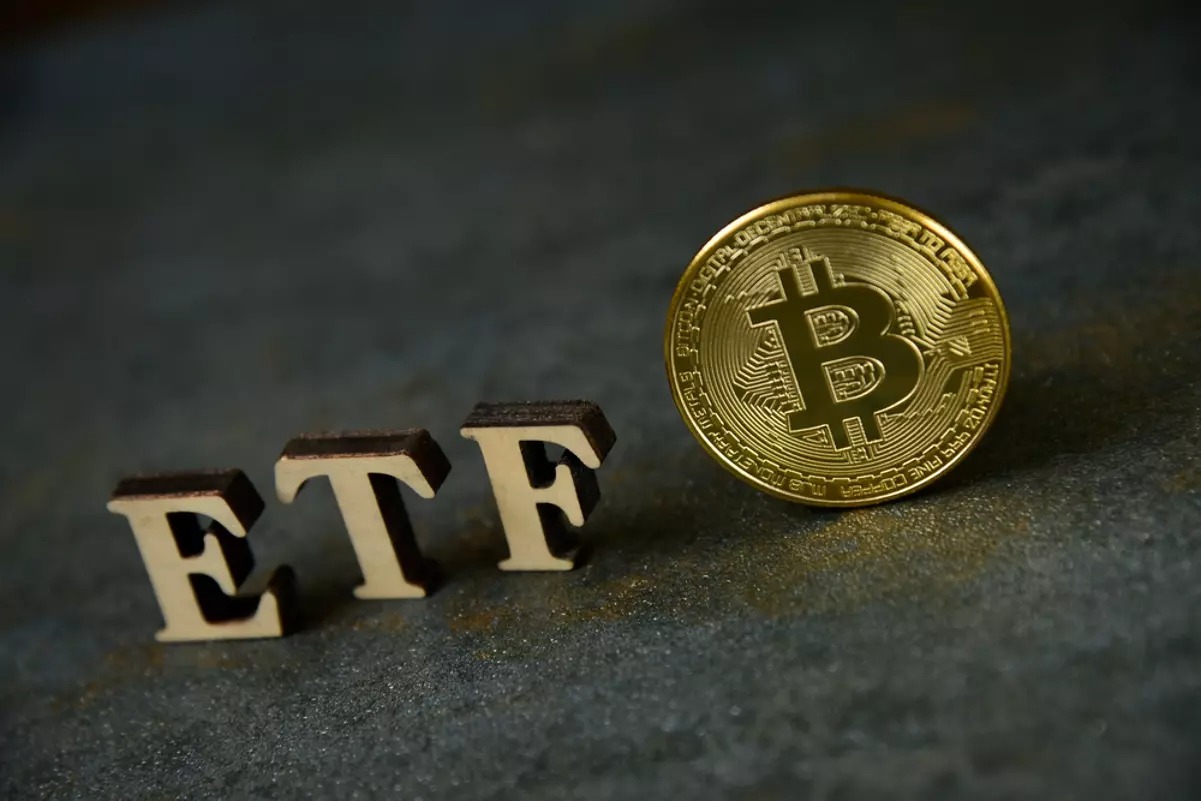Bitcoin faces greater downside risk than Ethereum- Here’s why

While the market for cryptocurrency continues to experience selling pressure, the entire market is showing signs of stability. According to CoinGlass data, 62,000 traders were liquidated during the bearish price action. In the same time frame, liquidated more than $180 million.
Battle of the bears
Massive losses have been caused by the end of bull markets and the collapses of top projects. Since the beginning of 2022, the overall performance of crypto-asset markets has been poor.
The market has been harsh on the top two cryptocurrency, Bitcoin [BTC], and Ethereum[ETH], respectively. BTC’s price has dropped by 70% from its high point, while ETH’s price has dropped by 75% from its high. Despite this, the downside risks for the former are still greater.
Price movements in cryptocurrency markets are a result of increased pressure from investors who have been buying a lot of put options.
It is possible to wonder what caused the price drop. The huge selling that was triggered by the liquidation institutions has led to the unprecedented price fall. This is the case for the largest cryptocurrency.
A medium (publishing platform blog) has been created to provide a weekly review of the crypto market.
“The derivatives market was affected by the continuous selling that was triggered by the liquidation institutions. This drove the risk aversion sentiment to stay high for a long period. One manifestation of risk aversion is the inversion of volatility surface.
The blog analysis also highlighted the ‘gamma exposure” for BTC compared to ETH.
A persistent negative gamma exposure will mean that option sellers who hedge against falling prices will experience additional selling pressure, increasing the overall risk in the crypto market.
Take a look at the graph below. BTC exposure is not easily controlled.
The blog stated that ETH exposure is controlled. This offsets the potential for additional selling pressure.
On a neutral note?
There have been patterns in the crypto market of high-level mentions of peak bearishness occurring after prices fall and before they flatten out or reverse. The bear market consciousness has dropped significantly in the last month as traders adopted a neutral tone.
The SEC rejected bitcoin spot ETFs again. Now what?

Some digital asset managers are attempting to counter regulators to offer more legal investment opportunities, as governments around the world continue to monitor the crypto market.
On Wednesday Grayscale Investments submitted a request to convert its Bitcoin Trust (GBTC), into an Exchange-Traded Fund (ETF). The U.S. Securities and Exchange Commission rejected Grayscale Investments application. The U.S. Securities and Exchange Commission (the SEC) rejected the application of Grayscale Investments to convert its bitcoin trust (GBTC) into an exchange-traded fund (ETF).
The SEC also denied Bitwise Asset Management the application for a spot Bitcoin ETF on that day.
The industry isn’t the first to be affected by the SEC’s decision. In the past year, the government agency denied more than a dozen bitcoin spot ETFs while simultaneously approving several future-based ETFs.
TechCrunch was told by Ken Goodwin, Director of Institutional and Regulative Affairs at Blockchain Intelligence Group. “Spot bitcoin ETFs are based on bitcoin’s price, but futures-based ETFs are based on CME’s price for bitcoin futures products, which in turn is tied with an index,” Goodwin said. The Bitcoin ETFs supporters argue that futures markets are still based upon the spot bitcoin price. However, the SEC points out that CME’s futures trading market is regulated under the [Commodity Futures Trading Commission].
CME’s Bitcoin Futures Contract, which is a U.S.-based contract, allows traders to place bets on bitcoin’s value through the SEC. CME Group, a global market company, offers a dollar cash-settled option that provides a reference rate for bitcoin’s value in U.S. dollars once a day.
Grayscale’s chief legal officer, Craig Salm, stated on Twitter Spaces, that the SEC had denied spot and futures bitcoin ETFs once, at most ‘treating them fairly’
However, that was 2017.
TechCrunch has learned that the SEC approved both short and long exposure bitcoin futures ETFs in recent years, while delaying spot bitcoin ETFs. “This disparate treatment is actually one of the most important arguments supporting our lawsuit.”
Sonnenshein stated that the case will be heard by an appellate court because the defendant is a regulator. A decision should be made within nine to twelve months.
Goodwin stated that the rejection by the SEC was based on concerns about market manipulation and lack of a surveillance sharing agreement between a regulated market and an exchange. “This is in line with the concerns expressed by regulators over years regarding rejection of other bitcoin ETF applications.
GBTC has 3.5% of all bitcoins in circulation. Its shares are the largest and best-known publicly traded crypto exchange-traded product, Ryan Selkis (founder and CEO of Messari), wrote in a Report. Selkis stated that Grayscale products were like ETFs but are not actually ETFs.
TechCrunch was informed by Nate Geraci of The ETF Store that ‘it’s clear the SEC will not approve a spot Bitcoin ETF until they have regulatory oversight over crypto exchanges. “Even with the possibility of Grayscale litigation – which appears to at least have some validity – The ETF Store didn’t hesitate in denial these spot bitcoin ETF filings.
Bitcoin sees slight rebound after nearly falling below $20,000, but it’s still at late 2020 levels

Bitcoin rose Thursday after a similar rise in U.S. stocks. However, investors still feel the effects of a dramatic plunge that saw the largest cryptocurrency in the world drop to $20,000.
At 3:40 a.m. According to CoinDesk data, bitcoin traded at $21,667.90 ET. This is almost 3% more than the previous day.
Bitcoin is currently at levels not seen in bitcoin since December 2020. The digital currency has fallen by 27% over the past week, and is now down 70% from November’s all-time high.
Other cryptocurrencies, such as ether, also saw higher prices in the past 24 hours.
Bitcoin is closely linked to stock indexes, particularly the Nasdaq which rose Wednesday after the U.S. Federal Reserve raised interest rates by 0.75 percent. Bitcoin rose slightly on Thursday because of this.
There are still many issues that weigh on the crypto market.
After the collapse, sentiment is still shaken by the and of so-called algorithmic stabilitycoin TerraUSD.
A stablecoin, a type cryptocurrency, is meant to be tied to a real-world asset. Many of these coins are pegged one to one to the U.S. dollars. Some, like tether or USDCoin are backed with real assets such fiat currencies and government bond. Many algorithmic stablecoins like TerraUSD don’t have any assets in reserve. Instead, an algorithm governs the $1 peg.
The bear market is often called a new “crypto winter” and is testing other projects.
An algorithmic stablecoin USDD also lost the dollar peg earlier in the week. Tron DAO Reserve is responsible for USDD’s $1 peg and holds other cryptocurrencies in its reserve including USDC and tether.
All eyes are now on Celsius, a crypto lending platform that may be insolvent. This has sparked fears of contagion to the wider market. Celsius stopped withdrawing funds earlier this week for customers.
New York lawmakers pass a moratorium on Bitcoin mining

New York’s Bitcoin mining boom was halted by a state Senate bill. It will stop new permits for certain fossil fuel power stations to be used in Bitcoin mining. This measure was also passed by the state Assembly earlier in the year. It will initiate a study about the environmental impact that mining facilities have on the state.
The crypto industry promised new jobs but had divided Senate Democrats over whether the moratorium would have greater economic or environmental costs. As the state Senate approached its deadline, talks remained stalled until the late hours of the evening.
As the bill heads to Governor Kathy Hochul, it will be put to another test. Hochul was presented with a $40,000 donation from the chief executive of a company which runs an ex-alcohol plant that has been converted to a cryptomining facility. The New York Times reported.
The resurgence of fossil fuels has caused backlash
Many mining companies have opened their doors in the US after China imposed new restrictions last year on Bitcoin mining. New York is a hub for Bitcoin mining due to its abundance of hydroelectricity and the possibility to restart old fossil fuel plants in order to mine Bitcoin.
Some residents and environmentalists are expressing concern about the rise of fossil fuels. They are concerned that Bitcoin will help revive fossil fuel plants and cause damage to ecosystems, derailing the state’s efforts in tackling climate change.
Today’s bill passed. It imposes a moratorium for two years on new permits for cryptocurrency mining operations using a particularly energy-intensive approach to verify transactions on blockchain. This is called proof of work and it underpins two major cryptocurrencies, Bitcoin and Ethereum.
Miners use special hardware to solve difficult puzzles and earn crypto tokens in exchange for proof of work. This process consumes a lot of energy. The Bitcoin network would be 32nd in the world in terms of annual electricity consumption (right between Argentina, the Netherlands).
This energy demand poses a threat to climate goals, which were set in 2019 by New York State. The state committed to reducing greenhouse gas emissions by 85 percent by 2050.
Greenidge Generating Station is located in New York’s Finger Lakes area. It has become a hot spot for residents concerned about the environmental impact of cryptocurrency mining. Greenidge began life as a coal-fired power station. In 2020, it was converted to a nearly full-time Bitcoin mining operation.
Greenidge is exempted from the moratorium on Bitcoin mining. This bill focuses on fossil fuel power plant applications for permits to mine energy proof-of work-based cryptocurrencies. The bill does not prohibit any operations that are powered by renewable energy, or use less-energy-intensive alternatives to proof of work as many other cryptocurrency use to verify transactions.
Cryptocurrency mining is still on the rise despite huge price drops

While bitcoin and other cryptocurrency’s value has fallen in recent weeks however, the amount of computer power dedicated to the industry is still rising
Despite a drop in global prices, cryptocurrency mining continues using increasing amounts of computer power. This makes it less attractive economically.
Bitcoin and Ethereum miners are paid with cryptocurrency that fluctuates in value relative to traditional currencies. This means that although mining costs can be predicted, income is unpredictable. The price of bitcoin reached PS50,000 on 8 November 2013 and was just below half its current value at PS24,244. On 15 May 2014, it was barely lower than half of that at PS24.244. Over the same time, Ethereum’s price has fallen from PS3567 down to PS1647.
Miners are resilient, despite these drops. They acquire cryptocurrency through intensive computing operations. The total hashrate of bitcoin’s network, which measures the amount of computing power used to mine the cryptocurrency, is at an all-time high. According to the latest data from the Cambridge Centre for Alternative Finance, it was 248 exahashes per seconds in February. More recent data shows that it has been increasing over the past months. The drop in Ethereum prices has also proved resilient for Ethereum miners. According to data from YCharts on 15 May, the Ethereum hashrate was at 1103 terahashes/second, compared to 613 terahashes a year ago.
Concerns about the carbon footprint of cryptocurrency sector raises with an increase in hashrate. More intensive computation generally requires higher electricity consumption. This could be offset by a shift to more efficient computing hardware, according to Alexander Neumueller from the CCAF. Its most recent model estimates that bitcoin’s current annual electricity consumption is 141 terawatt hours, which is comparable to Egypt’s.
While the network hashrate is a significant variable, the answer is more complicated. Neumueller says that the sustainability of the electricity generated by bitcoin miners and the efficiency in using the hardware play crucial roles. In our model, miners are assumed to be rational economic agents. They operate only profitable hardware. As profitability declines, it is assumed that older, less efficient hardware will be turned off.
The impact of the Chinese ban on cryptocurrency mining, which was in effect last May, is still a problem for the cryptocurrency industry. In a blog post, the CCAF states that the ban has actually made cryptocurrency more environmentally-friendly than it has helped. Miners have been looking for cheaper and greener energy.
Kyle McDonald, an artist who uses cryptocurrency in his work, has published research about the energy use Ethereum. He believes that a decrease in the price of a coin should result in a decrease in mining but that this could happen over longer periods of time. He says that despite the price drop, there is no unusual dip in hashrate at this time. “There is a slight downtrend in bitcoin right now, but it is not beyond the normal variability. We may see if miners are turning off their rigs more often in the next week, which could indicate that they have narrow profit margins.
Anecdotal evidence suggests that an Ethereum slowdown may be imminent. According to New Scientist, an Australian Ethereum miner named Josh Ward said that the economics and benefits of mining are less appealing now that the price has dropped. He says that the drop in profits was disappointing. “It has made me rethink how I see the opportunity cost of mining. There are many people selling their rigs and backing out of mining due to market crashes.
$19.2 Billion in Staked Assets – Liquid Staking Solution Lido Set to Surpass Curve’s TVL

According to defillama.com there is $214 billion in total decentralized finance value at the time this article was written. The largest defi protocol by TVL is Curve Financing, the decentralized exchanging (dex) platform. According to statistics from defillama.com, Curve is the leader of the pack today with $20.71 trillion and a dominance rate of 9.67% as of April 20, 2022.
Curve leads the pack in TVL for defi protocols, but liquid staking solution Ludo could soon take over. According to defillama.com metrics today, Lido’s TVL is $18.97 Billion, an increase of 16.02% in the last 30 days. Lido is seeing significant usage due to the defi protocol which allows Ethereum, Terra, Polygon and Kusama users use their staked assets for yield.
If a user decides to bond Terra’s LUNA to the token called BLUNA they will exchange LUNA for BLUNA and start receiving staking rewards. To earn more rewards, BLUNA tokens may also be used to join pools. Similar results can be made for other networks such as Ethereum. Lido’s staked Ethereum (STETH), has the 18th largest market cap out of 13,671 cryptocurrency. Lido staked Solana (STSOL ) has the 193rd highest market cap and BLUNA the 22nd.
Although defillama.com states that Lido has a TVL of $18.97 trillion, this only represents four blockchains that Lido uses to stake. Polygon is not included in defillama.com’s metrics. According to Lido’s stats, April 20, 2022 there were $19,220.700,179 staked between 99,606 stakers. According to Lido stats, $10.6 billion comes from Ethereum, $8.21 trillion from Terra, $363 Million from Solana and $3.3 Million from Kusama. The Polygon network is worth $13.8 million.
3.9% to 23.9% APY depending on Chain Rewards and Skipping Validator lock-ups
Current staking estimates show that Lido’s Ethereum Staking Solution has a 3.9% annual percentage return (APY), and Kusama has a 23.9% APY. Lido’s ability to double stake assets is a highlight, but there are defi liquidity pool providers who will take the reward from Lido, Lido warns.
Lido has one advantage: people don’t have to use a validator lock up period. However, they can still sell their bonded tokens in the open market. This route is not recommended as the user may lose the dex swap fee and approximately 1-2% depending on the value of the bonded token.
Lido Finance can be considered a “staking company” and there are many in the industry. There are many staking companies today, including Kyber Network and Celer Network. However, Lido has a tremendous amount of value today, across five different blockchains, and the recent increase in staked assets has been exponential.
Peter Thiel calls Warren Buffett bitcoin’s ‘enemy number one’

Peter Theil, a billionaire venture capitalist, said Thursday that Warren Buffett, an American tycoon is Bitcoin’s “Enemy number one.” Theil spoke at a Bitcoin conference in Miami, Florida.
According to Theil Buffett is on Theil’s ‘enemies’ list of people trying to stop cryptocurrency. According to CNBC, “Thiel” said that Buffett is the “sociopathic grandpa of Omaha,” as quoted by Theil. He told the crowd, “Let’s expose [them].”
Peter Thiel, co-founder of PayPal and Palantir, has said several times that he regretted not investing enough in Bitcoin. According to a Bloomberg report, Thiel said that he feels like he’s underinvested. Thiel said that he believed everyone knew the secret to cryptocurrency. He said that it might still be enough of a secret.
Warren Buffett is a well-known investor who invests in stocks that have value and cash flow. He believes that producing goods is the best way to make money. Buffett stated that cryptocurrencies have no real value in a 2020 interview with CNBC. They can’t reproduce, they don’t send you checks, they can do nothing. What you hope is that someone else will pay you more money later, but then that person has the problem. According to CNBC, it does not pass the currency test.
It is not a long-term means of exchange and it does not store value. He said that cryptocurrency is a great way to anonymously transfer money, but it’s not a durable means of exchange.
He also made an analogy to cheques. While they are a means of sending money, he said that they should be valued a lot because they can transmit money.
Jamie Dimon, head of JPMorgan Chase & Co. and Buffet, called Bitcoin a fraud. Dimon doesn’t like Bitcoin, the biggest cryptocurrency by market capitalization. CNBC quoted Dimon as saying, “I personally believe that bitcoin is worthless.” However, Dimon said that he didn’t wish to be a spokesperson for bitcoin. Dimon stated that it doesn’t matter to him. “Our clients are adults. They differ. This is what makes markets. We can’t give them access to bitcoin to purchase themselves, but we can provide them with legal, as clean access as possible.
Luna Foundation’s Bitcoin Reserve Wallet Now Holds $1.1 Billion in BTC

The Luna Foundation Guards bitcoin wallet held 24,954.95 BTC valued at $1.1 billion on March 26, 2022. The address has amassed a large amount of bitcoin in the past four days since Terra’s founder Do Kwon hinted about the blockchain project that leverages bitcoin-linked tokenomics. Do Kwon answered a question about why Terra’s founder chose bitcoin ( BTC) as a reserve asset.
Bitcoin is the only digital currency that has a hard reserve asset. It is extremely difficult to question bitcoin by someone in crypto.
The statement was followed by community noticing movement stemming form a Gnosis secure address which is reportedly owned the LFG. The news publication Bitcoin Magazine also tweeted about LFG’s bitcoin address. It said that the foundation had confirmed the address and made purchases ‘to support its UST stablecoin’. The statement was confirmed by the news publication on March 25 in an article. It stated that Terraform Labs founder Do Kwon had confirmed the address via email on Wednesday.
3AC co-founder says that $125 million per day of Bitcoin is a lot for three months.
The LFG Bitcoin address has continued to accumulate BTC. Its last transaction showed that it had 493 BTC, on March 26th at 5:18 AM (UTC). The address holds 24,954.95 bitcoin valued at $1.1 billion. It has never sent any satoshis out of its wallet. Gnosis safe addresses has sent four USDT transaction totaling around $125million. The last tether send was for 160 750,000 .
According to oxt.me and bitquery.io, the bitcoin address that sent Bitcoin to LFG bitcoin addresses has been identified as a Binance hot’ wallet. The LFG bitcoin address holds all BTC inputs. It was derived from the Binance hot wallet. The Gnosis safe address can still be purchased BTC daily with sufficient funds.
The Gnosis safe address currently holds $715.2 Million in tether ( USDT) as well as $398.23 Million in USDC. There have been many discussions in the crypto community about this purchase spree. Kyle Davies, co-founder and chairman at Three Arrows Capital (3AC), tweeted, “I can tell you some of you have never executed size before.” Let me tell you, $125mil/day [bitcoin] is a lot. This will last for three months.
Upcoming AML Regulations in Estonia to Affect Cryptocurrency Industry

Estonia’s banking sector was implicated in processing billions of dollars for Russian clients in the past. Now, Estonia is working to close those loopholes which could allow Russia, its elites and allied Belarus to avoid the sanctions imposed after the invasion of Ukraine.
The country’s Money Laundering and Terrorist Financing Prevention Act, which has stricter standards, will be in force next Tuesday. According to Politico, crypto companies will bear the brunt in Estonia’s fight against dirty money.
This update will make Estonia’s regulatory regime for platforms that use digital assets more stringent than the EU rules. It was deemed too loose because it allowed hundreds of businesses to apply for licensing from Estonia in 2017, despite being based elsewhere.
The Minister of Finance Keit Pennus-Rosimannus spoke out in support of the publication and stressed that Estonia is open to innovation, but that it will not tolerate financial crimes. He also stated that the priority will be given to money laundering prevention. He added:
Supervision was impossible. They operated under an Estonian license, but that was not a problem. This was the only thing that was changed by the law.
Estonian authorities are making it more difficult for companies to join the crypto space. Companies offering online exchange and digital wallet services will have to raise at least EUR100,000. Custodial service providers will need to raise at least EUR250,000.
New legislation will also increase registration fees and require stricter due diligence. It will also be subject to more regulatory scrutiny. In addition, crypto companies will have to be present in the country. This is a change from before.
Tallinn has tightened crypto oversight in the context of an ongoing audit of the country’s safeguards from illicit financial flows by the Council of Europe’s Committee of Experts on the Evaluation of Anti-Money Laundering Measures ( Moneyval).
The task of the auditors, which will be completed in December, is to examine digital asset regulations and other policies. Estonia is in a high-stakes situation as the Baltic country could end up on a grey list alongside Malta, another EU member that attempted to be a crypto-friendly destination.
The Estonian government is adjusting its approach, despite Brussels policy makers still considering EU’s Markets In Crypto Assets ( MICA) proposal. The European standards will be more stringent than the Estonian ones. The European Commission proposes capital requirements for crypto service providers. They range from EUR50,000 to EUR150,000.
President Lukashenko Signs Decree to Create Crypto Wallet Register in Belarus

Alexander Lukashenko, the Belarusian president, has signed a new decree to expand his country’s regulatory framework regarding cryptocurrencies. This will enable the Belarus High-Tech Park ( TTP), the body that oversees the country’s crypto space to create a registry for addresses of crypto wallets that can be used for illegal purposes.
In an announcement , the president’s press office stated that the goal of the legislation is to “protect participants in digital asset markets from loss of property” and “prevent unintentional participation in activities prohibited under law,” . Decree No.48, “On the register (identifiers of virtual wallets) and features of the cryptocurrency circulation”, is dated February 14, 2022. Lukashenko’s administration also stressed:
Belarus continues to develop the legal framework for digital asset regulation. It allows digital currency free circulation, which is a rare feature among other countries.
Officials in Belarus believe that this requires constant monitoring and, when necessary, clarification and supplementation of regulatory norms. This includes measures to stop the financing of prohibited activities, which was the primary reason for the adoption the most recent crypto decree.
If law enforcement agencies receive information that the wallet addresses are being used to conduct illegal operations or to facilitate transactions related to extremism or terrorism, they will add them to the register. Authorities can also use the assistance of other cryptocurrency platforms and exchanges to seize crypto assets.
Minsk’s government will have three months to comply with Lukashenko’s order, which will then be in force. A 2017 presidential decree legalized crypto activity in Belarus. It was implemented in May 2017 and provided tax breaks and incentives to crypto-businesses.
The Belarusian head-of-state hinted last March at tightening industry rules, citing China as an example. However, HTP officials later stated that authorities don’t intend to adopt any stricter regulations. This month, it was reported that Belarus plans to permit investment funds the acquisition of digital assets.
According to Chainalysis’ Crypto Adoption Index, which tracks blockchain analytics firm Chainalysis’s crypto adoption index, cryptocurrencies can not be used in Belarus for payment purposes. However, Belarus is third in Eastern Europe for crypto adoption. This is largely due to strong peer to peer activity. The region’s top two spots are held by Russia and Ukraine, both former Soviet republics.
